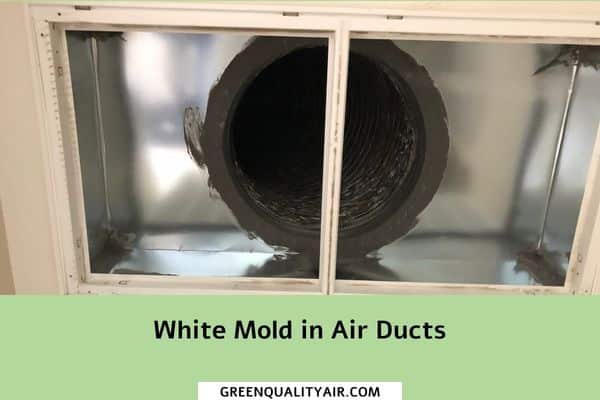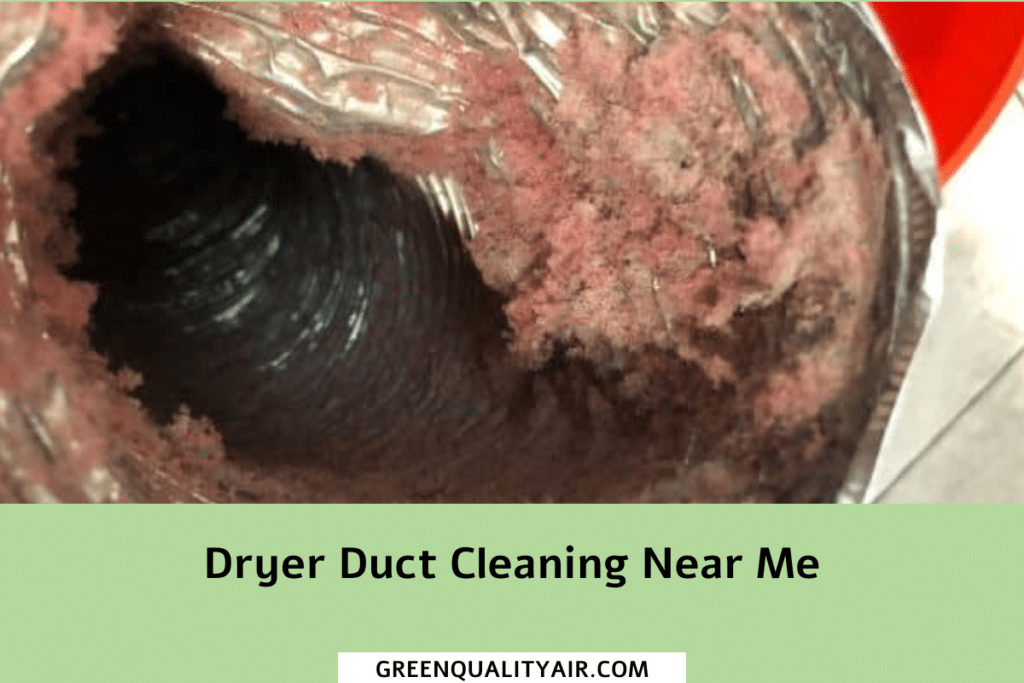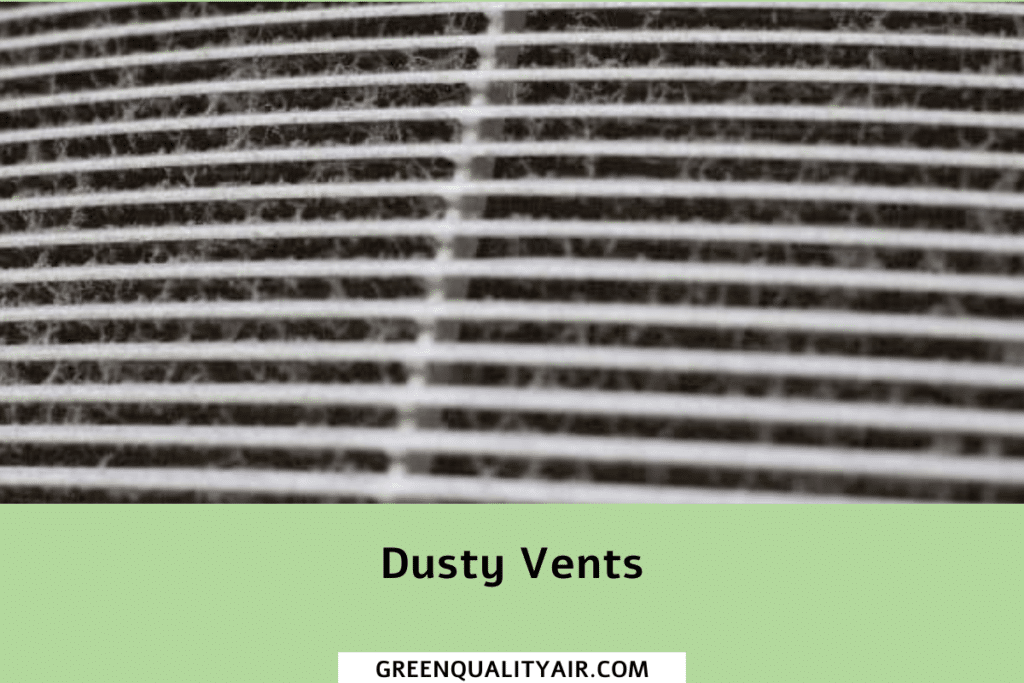White mold, also known as powdery mildew, is a fungus that can grow in various conditions, including air ducts. It ranges in color from white to gray and is typically found in damp, humid places such as basements, bathrooms, and ventilation systems.
White mold is considered “cosmetic” and generally produces no adverse health effects. However, if left untreated, it can spread quickly and damage the materials it’s growing on.
White mold can grow on air ducts from moisture that builds up due to poor ventilation, leaking pipes, or high humidity levels. It may also appear due to inadequate air-conditioning and a high indoor dust level.
Common signs of white mold in air ducts include an unusual musty smell, fuzzy patches on the surfaces of the ducts, and discoloration of the surfaces.
What are the Dangers of White Mold in Air Ducts?
White mold is a type of fungus that thrives in damp, dark environments. It often appears as a powdery or fuzzy substance on surfaces. Unlike its more infamous cousin, black mold, white mold can be tricky to identify due to its lighter color. However, its potential health impacts are no less serious.
White mold releases spores into the air, which can spread throughout your home via the HVAC system. These spores, when inhaled, can cause respiratory issues, especially for individuals with allergies or asthma. Understanding the nature of white mold is the first step in effectively managing it.
Contact Us
Understanding the Basics of White Mold
White mold in air ducts can present several health dangers. When present in high concentrations, white mold can release spores into the air that can cause allergic reactions and aggravate pre-existing respiratory conditions.
In addition, in some cases, white mold can produce potentially dangerous toxins known as mycotoxins. Some toxins may be associated with neurological problems, cancer, and other serious health problems.
Although the risks associated with white mold in air ducts vary from person to person, addressing this issue as quickly as possible is essential to reduce the chances of developing any health complications.
Causes of Mold in Air Ducts
Several factors contribute to the growth of mold in air ducts. The primary culprit is moisture. High humidity levels, leaks in the HVAC system, or poor ventilation can create an environment conducive to mold growth. Dust and debris accumulation within the ducts provide additional nutrients for mold to thrive.
Improper maintenance of HVAC systems further exacerbates the problem. Regular cleaning and servicing are vital to prevent conditions that encourage mold development. Understanding these causes helps in formulating a proactive approach to mold prevention.
Health Risks Associated with Mold in Air Ducts
The presence of mold in air ducts can significantly impact indoor air quality. Mold spores are known allergens and can trigger symptoms such as coughing, sneezing, and skin irritation. For individuals with compromised immune systems, prolonged exposure can lead to more severe health issues.
Children and the elderly are particularly susceptible to mold-related health problems. The spores can exacerbate existing respiratory conditions like asthma, leading to increased medical visits and treatments. It’s crucial to address mold issues promptly to protect your household’s health.
How to Deal with White Mold in Air Ducts
Clean the Interior Surfaces
The first step in dealing with white mold in air ducts is to clean all of the interior surfaces that have been affected. Next, use a vacuum cleaner to remove spores and debris and clean the affected area with mild detergent.
Afterward, you can use a bleach solution (one part bleach to nine parts water) to disinfect the affected surfaces.
Change Filters Regularly
The next step is to change the air filters regularly. Dirty or clogged filters provide an ideal environment for the growth of white mold. It’s best to replace the filters once every three months for optimal results.

Improve Ventilation
Improving ventilation is also an effective strategy for reducing the chances of white mold appearing in air ducts. You can improve the ventilation in your home by opening windows and doors when possible, as well as running fans and other fan-circulated appliances.
Check for Water Leaks
Another vital step when dealing with white mold in air ducts is to check for water leaks. Broken pipes, improper insulation, and other moisture problems can cause these leaks. Take the time to inspect the area thoroughly, and if you find a water leak, have it repaired as soon as possible.
Hire Professionals
If you’re unsure how to deal with white mold in air ducts or are concerned about potential damage to existing insulation, it’s best to call a professional.
A professional contractor can inspect the area and provide you with the knowledge and practical experience needed to safely remove the white mold without damaging the existing materials.
More Articles

Earth-Friendly Air Duct Cleaning: Sustainable Solutions for Clean, Healthy Air

Green Vent Cleaning – A Comprehensive Guide to Sustainable and Effective Ventilation Maintenance

Breathe Easy with Green Air Duct Cleaning Solutions

Earth-Friendly Air Duct Cleaning: Sustainable Solutions for Clean, Healthy Air

Green Vent Cleaning – A Comprehensive Guide to Sustainable and Effective Ventilation Maintenance

Breathe Easy with Green Air Duct Cleaning Solutions
Preventing Future Mold Growth in Air Ducts
Prevention is the best strategy for managing mold in air ducts. Regular maintenance of your HVAC system is paramount. Schedule bi-annual inspections to clean and service your system, ensuring it’s free from dust and moisture accumulation.
Proper ventilation is essential in preventing mold growth. Ensure that your home is adequately ventilated, especially in areas prone to moisture, such as bathrooms and kitchens. Using dehumidifiers can also help maintain appropriate humidity levels.
What Should You Look for When Hiring Professionals For Cleaning White Mold in Air Ducts?
When hiring a professional, look for contractors with the right experience and certifications. Look for specific training in mold removal and ask for a list of references.
You should also make sure the contractor is familiar with the type of material used in your air ducts, as well as any potential health risks associated with the type of white mold that has appeared.
Something else you want to ask is their plan of action. This will help you understand their process to get rid of the white mold and ensure that the job is done properly.
Conclusion
White mold in air ducts can seriously affect your health and safety. Therefore, it’s essential to take the necessary steps to address potential problems promptly and properly to minimize the chances of developing any adverse health effects. To do this, start by cleaning the interior surfaces, changing filters regularly, and improving ventilation.
Additionally, check for water leaks and hire professionals if needed. By following these steps, you can significantly diminish the presence of white mold in air ducts and create a healthier environment for everyone in your home.
White Mold in Air Ducts FAQ
What are the health risks of white mold?
White mold is a type of fungus that is commonly found in wet, damp environments, and can cause serious health risks if not managed properly. It’s estimated that 1 out of every 5 homes has some kind of white mold infestation.
The most common health risks associated with white mold include respiratory issues such as allergies and asthma, nausea and vomiting, skin problems like rashes or dermatitis, headaches and fatigue. In more extreme cases, it can even lead to infections and pneumonia-like symptoms.
However, there may be an additional risk posed by white mold that we are only beginning to understand: bioprinting in the foodtech industry. Bioprinting involves using living cells to produce goods from a 3D printer – from complex organ structures for medical use all the way down to food products for consumption.
But this technology carries a unique set of potential health risks due to the presence of fungi or bacteria present in the material used for printing—a process known as biomaterialization — which could potentially pose new threats resulting from exposure to pathogenic microorganisms like white mold.
To mitigate this risk while still advancing this emerging technology safely requires specialized education surrounding safety protocols related to bioprinting practice production techniques as well as rigorous testing throughout each stage of the printing process.
With proper awareness and safety measures in place however new opportunities open up within various aspects of medical research including tissue regeneration or even creating safe alternatives for people with allergies or intolerances towards certain foods who would otherwise not be able access them via traditional methods.
How does white mold get into air ducts?
White mold typically enters air ducts in the form of bioaerosols, which are microscopic particles that contain living organisms. The most common source of these particles is organic matter like plant and food debris, dust and dirt, or even stagnant water inside the ventilation system. This can occur when proper maintenance is not done or if there is a breach in the vents due to poor installation.
Recently, bioprinting technology has emerged as a potential solution for preventing white mold from entering air ducts. In the FoodTech industry, this new technology uses plant-based printing materials to create 3D food items such as cakes and cookies without any animal ingredients.
At the same time, it helps reduce contamination by controlling contamination levels in kitchens where traditional molds are used in manufacturing processes. By creating tight seals around food products before they reach consumers, bioprinting also keeps them from entering air duct systems and creating potentially dangerous microbial buildup or white mold growth over time.
Are there any specific types of white mold I should be aware of?
Yes, there are a few types of white mold that you should be aware of. In particular, one type of white mold is called “Penicillium chrysogenum,” which can be found on food products like salami and aged cheese. This type of mold is responsible for producing the antibiotic penicillin!
Another form of white mold is Aspergillus, which can be identified by its greenish-black spores. Aspergillus has many beneficial uses as it helps in the fermentation process of certain foods such as soy sauce and sake. It’s also used to produce a variety of drugs such as corticosteroids and cholesterol-lowering compounds.
A more recently developed technology known as bioprinting has also been used in the foodtech industry to create healthier alternatives to traditional processed foods. Bioprinting involves 3D printing live cell lines directly onto an edible substrate—a process made possible through using a combination of fungi like Penicillium chrysogenum, Rhizopus oryzae, and Schizophyllum commune together with edible polymers like starches or proteins.
These molds produce enzymes that break down carbohydrates into smaller sugars during this process which make them ideal choices for bioprinted products such as vegan meats and dairy replacements due to their natural texture and taste improving properties!
How do I know if the white mold problem in my air ducts has been resolved?
When it comes to getting rid of white mold in air ducts, the most important factor is working with a professional who has the expertise and experience necessary to get the job done right. A certified HVAC technician or mold remediation specialist will be familiar with all aspects of air quality and can assess the situation accurately.
One of the most promising technologies for eliminating white mold in air ducts is bioprinting, which uses living organisms that are specifically designed to break down unwanted contaminants like molds. This technology has been utilized in foodtech industries for some time now, but its potential applications are ever-expanding; many experts believe it could be used effectively to combat spores and other impurities contained within indoor airways.
By utilizing highly targeted bioprinting techniques, professionals can target specific sections of an airway system under controlled conditions – reducing both costs and health risks associated with these types of infestations.
Bioprinting is just one example of several technologies being employed by experts worldwide as part of their efforts to improve indoor air quality and minimize potential problems caused by exposure to airborne pollutants such as white mold spores.
It’s important that you partner with a professional who not only knows what problem solving techniques are available but also understands how best to apply them depending upon your unique circumstances – because no two homes have exactly the same ventilation system or environmental requirements!
What type of professional should I hire to get rid of white mold in my air ducts?
If you’re looking for a professional to help get rid of the white mold in your air ducts, then hiring a certified home inspector is the best option. This individual can assess the severity of the issue and provide comprehensive advice on how to remove it. If they determine that cleaning up the mold yourself isn’t possible, then you’ll need to hire a specialist contractor with experience in this area.
However, before hiring any contractor or service provider, make sure they are properly insured and have references from previous customers who have had success with resolving their issues.
Also be sure that they understand all safety protocols when dealing with white molds and can accurately identify what type of mold it is before beginning treatment. The last thing you want is to accidentally cause more damage than good by using an unqualified professional!
In addition to seeking out professionals in traditional fields like home inspection and contracting work, there’s another exciting development you should consider: bioprinting for foodtech applications. Bioprinting works by printing 3D structures made up of food products such as cereals or vegetables – these structures trap airborne contaminants like dust and dirt as well as killing fungi spores like those found in white molds.
Not only does this method offer an effective solution for eliminating contamination from air ducts but it also provides a way of helping keep people healthy while still enjoying tasty meals!






